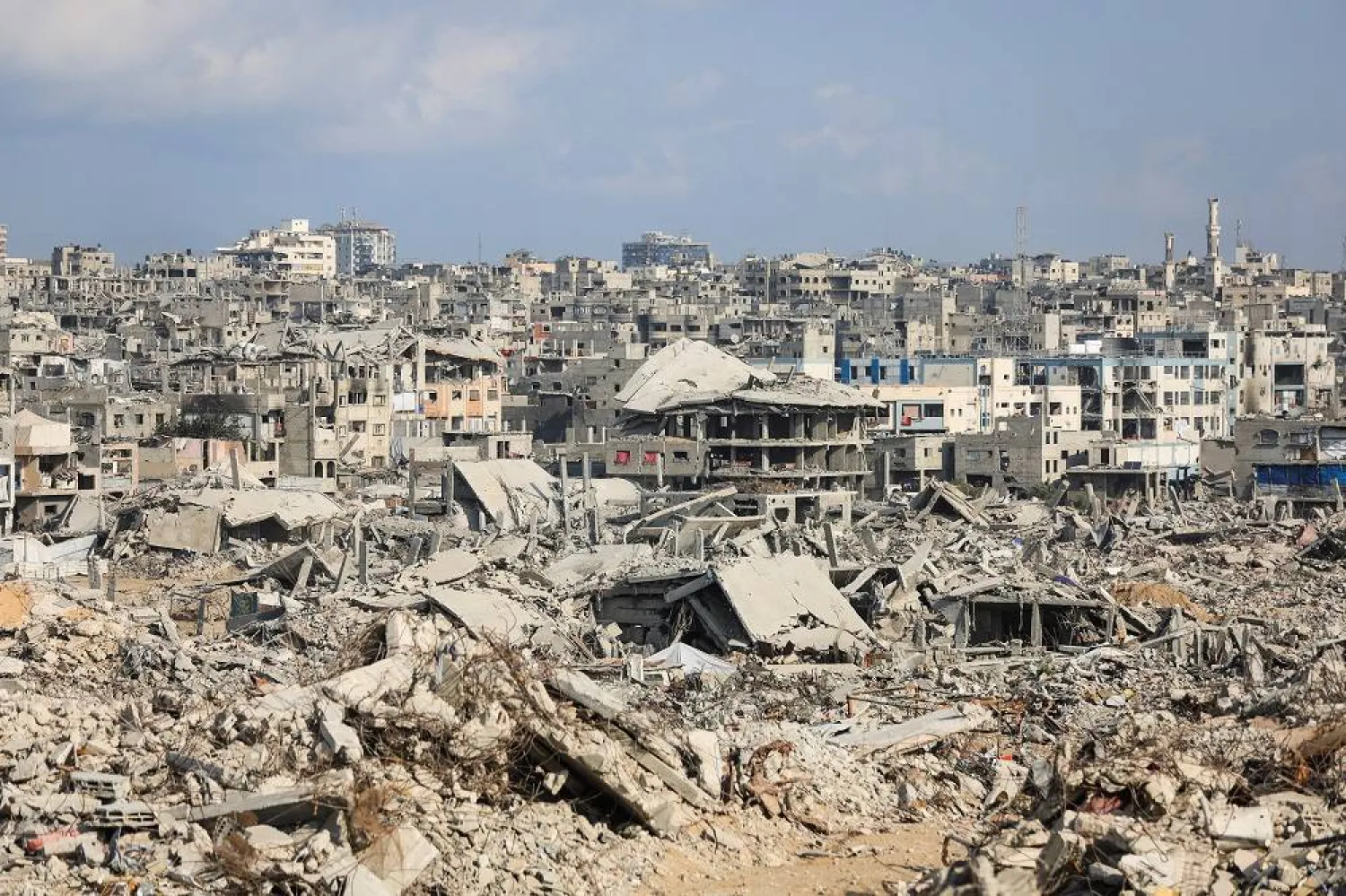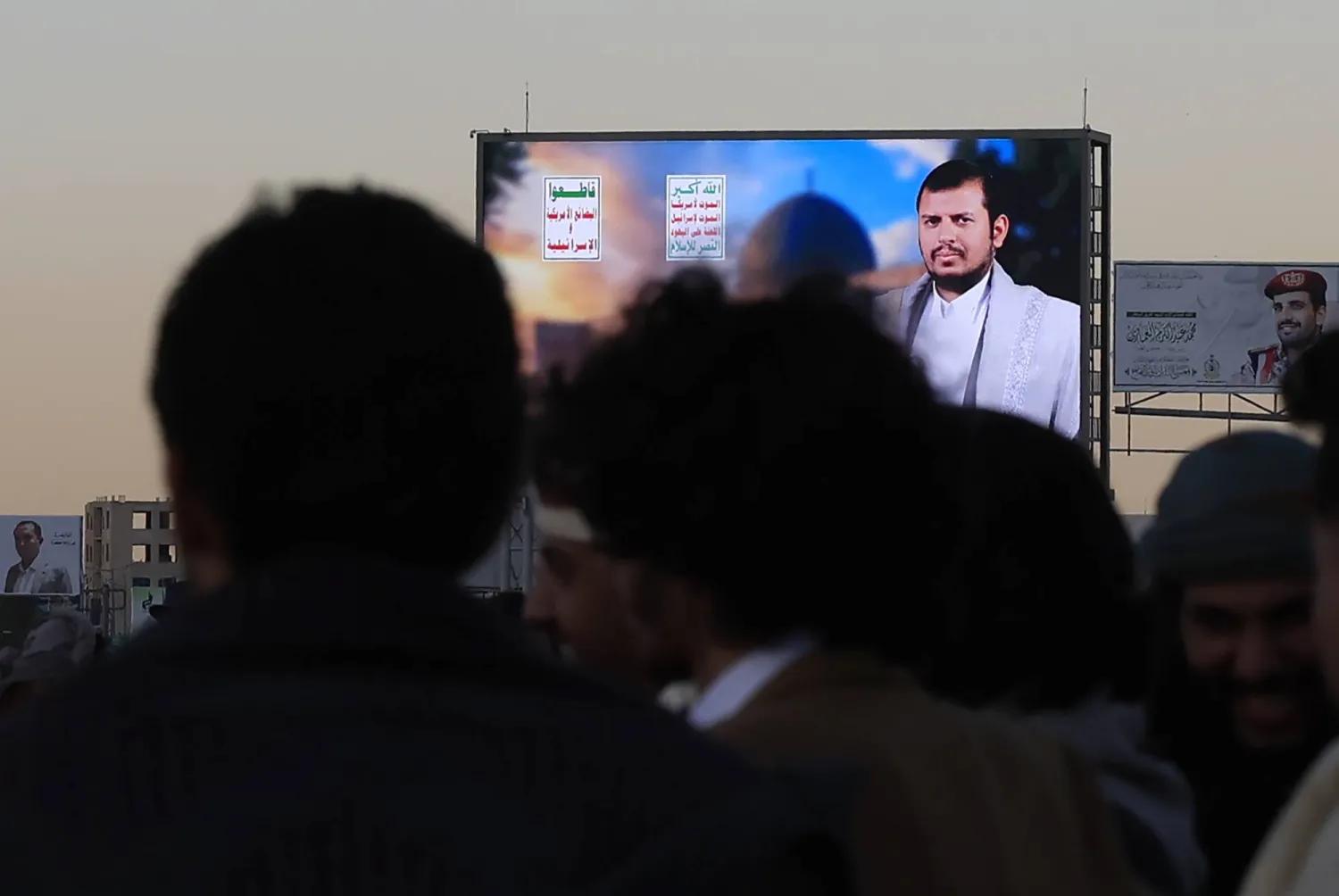As the “Al-Aqsa Flood” operation by Hamas and the Gaza war began, Iran was already dealing with the fallout from protests sparked by the death of Mahsa Amini, making the autumn of 2022 one of the bloodiest in the country’s recent history.
The war in Gaza erupted at a crucial time for Iran’s leadership, which was facing international pressure over its crackdown on protests, its drone supply to Russia, and stalled nuclear talks.
From the start, Tehran described Hamas’ attack as a “natural and spontaneous reaction” to what it called Israel's “provocative war policies” and actions by the far-right Israeli Prime Minister.
Iranian officials denied any role in planning the operation, but their diplomatic moves suggested they were prepared for the conflict’s impact on the region.
Less than a week after the attack, Iran’s late Foreign Minister, Hossein Amir-Abdollahian, began a regional tour, meeting with leaders of countries and groups allied with Iran, including in Iraq, Syria, Lebanon, and Qatar.
His aim was to coordinate efforts and send regional messages.
Iran also warned Israel that it could face multiple fronts if its military actions in Gaza didn’t stop.
Tehran has since worked to strengthen the image of armed groups in the region, pushing to legitimize its support for these factions amid the ongoing political and regional unrest.
This marked a key moment for Iran, as Tehran claimed it had elevated the “Resistance Axis” groups from a regional to a “global” level, referring to this shift as a move from the “World of Resistance” to the “Global Resistance.”
In doing so, Iran, which had been trying to ease tensions with its neighbors, adopted a more aggressive stance towards groups linked to it. Many saw this as part of Iran’s broader strategy to expand its influence across the region.
Officially, Iran told the international community that these groups act independently, make their own decisions, and produce their own weapons.
However, several Iranian officials have acknowledged the role of Gen. Qassem Soleimani and the Revolutionary Guards in supplying weapons and technology to these groups.
Iran’s second significant move after the Al-Aqsa Flood came a month into the Gaza war when Supreme Leader Ali Khamenei called for cutting off Israel’s “economic lifelines,” especially oil and energy routes.
Iranian-backed groups, especially the Houthis, began attacking commercial ships in the Red Sea, disrupting shipping for months.
At the same time, Iran-aligned militias in Iraq launched drone attacks on Israel and US bases in the region.
The US responded after one of its bases in Syria was attacked, striking positions held by these militias.
Politically, Iran insisted that its allied groups’ demands be met for any Gaza ceasefire, and it opposed international peace proposals, especially the “two-state solution.”
In December, Iran’s foreign minister even noted that both Iran and Israel rejected the two-state plan.
In the third phase, Israel ramped up airstrikes against Iranian forces in Syria. In December, an Israeli strike killed Razi Mousavi, a key Iranian logistics officer.
A month later, the Revolutionary Guards confirmed the death of their intelligence chief in Syria. The biggest blow came in April, when an Israeli airstrike on a meeting at the Iranian consulate killed Gen. Mohammad Reza Zahdi, Iran’s top military commander in Syria and Lebanon.
In its fourth major escalation, Iran nearly went to war with Israel after responding to the bombing of its consulate by launching hundreds of missiles and drones directly from its territory.
Israel claimed it intercepted the attack but retaliated by striking a radar system at a military airport in Isfahan, near a key nuclear site.
This clash heightened fears of a shift in Iran’s nuclear ambitions, with growing talk in Tehran about developing deterrent weapons and Israel threatening to strike Iran’s nuclear facilities.
The fifth key moment for Iran followed the deaths of President Ebrahim Raisi and Foreign Minister Hossein Amir-Abdollahian in a helicopter crash near the Azerbaijani border. Authorities quickly denied conspiracy theories, ruling out an Israeli attack.
Three months later, Iran’s military confirmed the crash was caused by bad weather, but some questions remained unanswered.
During this period, Iran’s political focus shifted away from the Gaza war due to the presidential election and efforts to form a new government.
Candidates in the election avoided discussing the Gaza conflict or Iran’s support for Hamas, despite criticism over ignoring pressing issues like sanctions and stalled nuclear negotiations.
Most candidates only praised Iran’s missile program and vowed to strengthen deterrence against Israel.
The sixth major event occurred during the inauguration of Iran's new president, Masoud Pezeshkian, on July 30, when Hamas leader Ismail Haniyeh was assassinated at a Quds Force facility in northern Tehran, marking a significant turn in the Gaza war.
Khamenei promised to respond to the “violation of Iranian sovereignty” following the assassination of a “guest of Iran.”
Officials and military leaders varied in their tone and language of threats but consistently stressed the need for a response as time passed and doubts about Iran’s actions increased.
Haniyeh's assassination in Tehran raised significant questions about the operation, especially regarding potential security breaches.
The seventh key moment was marked by the “Pager Bombings,” alongside a message of de-escalation from Pezeshkian, particularly towards the US and Israel.
Before traveling to New York, Pezeshkian stated at a press conference that Iran does not want to destabilize the region or export its revolution. He expressed a willingness to engage with the US if it shows it is not hostile, even referring to the US as “brotherly.”
During meetings at the UN General Assembly, he reiterated, “Iran is ready to set aside its weapons if Israel does the same,” according to an audio recording.
Pezeshkian explained that the delay in Iran’s response to Haniyeh’s assassination was due to indications that a ceasefire agreement between Israel and Hamas was imminent, expressing frustration over the lack of progress and ongoing Israeli attacks.
Pezeshkian downplayed Hezbollah’s ability to confront Israel independently, challenging the narrative from officials close to Khamenei.
His remarks, along with concerns about possible security breaches during the “Pager Bombings” and the targeting of Hezbollah leaders, raised suspicions in Tehran about vulnerabilities in Iran’s defense and heightened fears of internal security lapses.
The eighth and most critical phase began with the assassination of Hezbollah Secretary-General Hassan Nasrallah, a key figure in Iran’s regional strategy, second only to Gen. Soleimani.
The Israeli airstrike on Nasrallah’s headquarters also led to a significant loss for the Revolutionary Guards.
Nasrallah is highly regarded among Iran’s leaders, especially conservatives. His name has occasionally been mentioned as a potential successor to Khamenei, but such a candidacy would likely face opposition from various political factions due to his non-Iranian status.
In response to the assassinations of Haniyeh and Nasrallah, Iran launched its second direct missile attack on Israel.
This prompted Israel to threaten retaliation, indicating it could target various facilities, including oil refineries, fuel stations, and nuclear and military sites.
The situation between Israel and Iran remains highly volatile, with the potential for further escalation.









